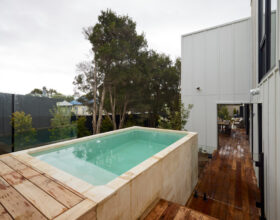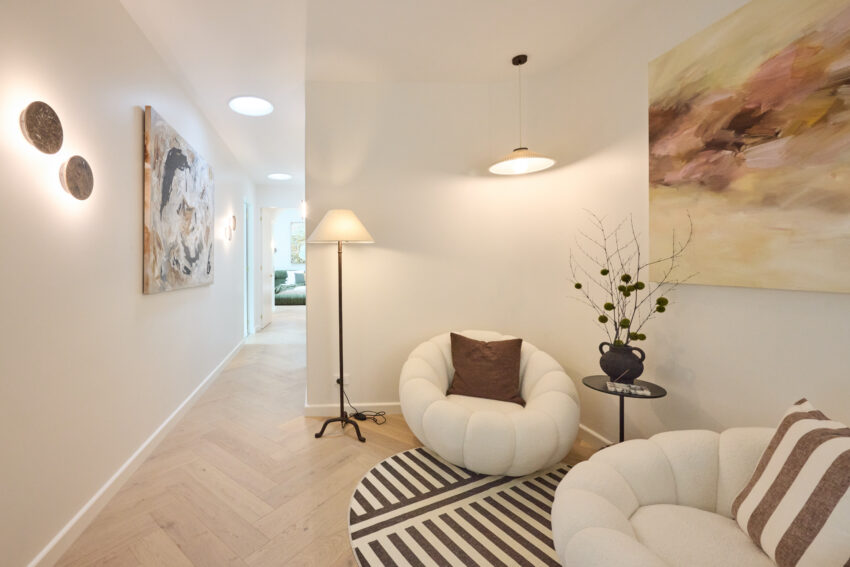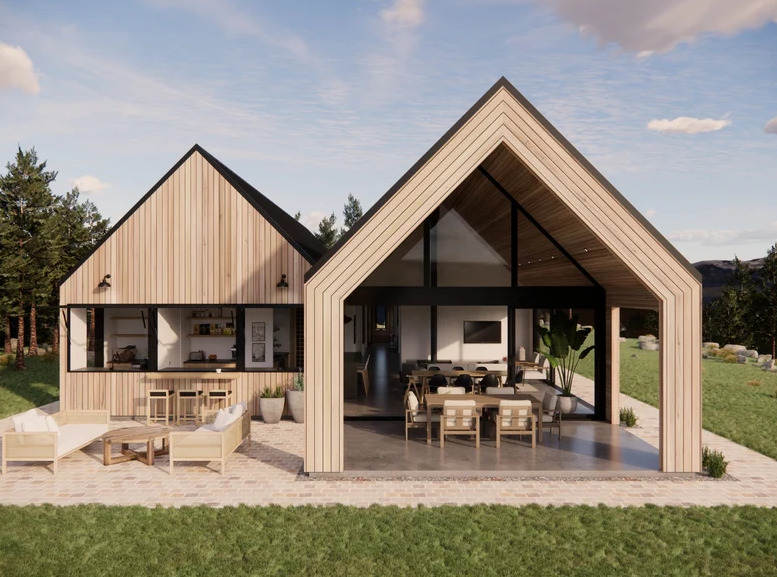Building a home that’s both beautiful and energy-efficient will be a rewarding journey. I wanted to share how I reached an 8-star rating on the Nationwide House Energy Rating Scheme (NatHERS) – an impressive rating that reflects careful planning, sustainable choices, and a lot of heart in the design. Here’s what NatHERS is all about, …
Building a home that’s both beautiful and energy-efficient will be a rewarding journey. I wanted to share how I reached an 8-star rating on the Nationwide House Energy Rating Scheme (NatHERS) – an impressive rating that reflects careful planning, sustainable choices, and a lot of heart in the design. Here’s what NatHERS is all about, why it matters, and a breakdown of the decisions that helped me create a home that’s both environmentally conscious and cost-effective to run.
I could chat about this for ages! I’m always saying things like, “Too many windows – that’ll be leaking air! That layout? Way too draughty!” It’s all about creating a home that keeps comfortable year-round (and keeps you comfy, too!). Ha!
This house is still under construction. Come and follow me on Instagram. If you’re a brand looking to collaborate on this project email for a pitch deck.
What is NatHERS, and Why Does it Matter?
NatHERS is Australia’s way of rating how energy-efficient a home’s design is, from 0 to 10 stars. The more stars, the less energy needed to keep your home comfortable all year round. An 8-star rating means my home requires very little heating or cooling to stay comfortable, which cuts down on energy bills and reduces our carbon footprint. This kind of rating isn’t easy to achieve, but with the right planning, clever design, and a few sustainable features, it’s possible!
I live in a regional part of Australia (Wagga Wagga, NSW) and we have very cold winters and very hot summers.
My Tips for an 8-Star NatHERS Home
Start with a Designer Who Knows Star Ratings
It all begins with the design! I worked with an architect who understands NatHERS and could plan the home’s orientation, windows, shape, and layout to get the most out of each space. A solid design does most of the work – the rest, believe it or not, is relatively simple.
Optimise Orientation and Layout
All our main living and entertaining spaces face north, soaking up the sun’s warmth in winter and helping to keep heating needs low. With only one west-facing window, we’re also protected from the harsh afternoon heat.
Water Efficiency
I installed two 6,500L water tanks, scoring a 22 on water efficiency (20 was the target). This lets us collect plenty of rainwater to use around the house, reducing our reliance on mains water.
Energy Efficiency
Our home achieved a score of 79 for energy efficiency (above our target of 67), with features like:
- Heat Pump: Efficiently heats our water – I’ll be using a timer to manage it as well.
- Proper Ventilation in Kitchens and Bathrooms: Helps keep the air fresh and maintain a comfortable indoor environment.
- Cooling Options: Ceiling fans and a zoned 3-phase AC allow us to cool the home without wasting energy.
- Heating Options: The same 3-phase AC offers efficient heating when needed, though we also have another unique heating source…
A Note on Wood Fire Heating
I chose to include a wood fire for heating, which can be a bit of a hot topic in eco-friendly building! But here’s why it makes sense: a wood fire is a natural way to heat the house without drawing on AC power. Since we’re not storing excess energy, the fire helps keep our home cosy during the winter months and reduces the need for electric heating.
Alternative Energy – Solar Power
With a 13kW solar panel system, we’re able to power much of the home sustainably. These panels take care of a good chunk of our energy needs, further lowering our environmental impact.
No Gas Needed
Going gas-free was a deliberate choice to minimise fossil fuel use and streamline our energy sources.
Sustainable Landscaping
Native plants, which make up 50% of the garden, require less water, support local ecosystems, and complement the sustainable design of the home.
Thoughtful Material and Structural Choices
- Waffle Pod Foundation: Great for insulation, reducing heat transfer through the floor.
- Polished Concrete Floor: Acts as a thermal mass, storing daytime heat and gradually releasing it to keep things cosy.
- Strategic Orientation on the Block: The home’s position maximises sunlight in winter and shade in summer.
- Double-glazed Windows & Doors: Keep the warmth in during winter and the heat out in summer.
- Bulk Wall Insulation (R2.7): Maintains consistent temperatures, reducing the need for heating and cooling. External walls, plus garage, laundry and bath internal walls.
- Roof Insulation (R6.0): Also maintains consistent temperatures, reducing the need for heating and cooling. Plus R1.3 roof blanket.
- ProClima Thermal Wrap: Adds another layer of insulation/air tightness to keep everything sealed.
Smart Lighting Choices
Avoiding downlights minimises holes in the ceiling, helping insulation work effectively. I’ve opted to use them only in low-impact areas like the pantry, laundry, and WIR.
Future Pool Plans and Water Conservation
We did keep the pool out of the original star rating, but the water tanks allow us to top it up using rainwater when it’s ready. I’ll also be using a timer on the pumps (in conjunction with the solar panels).
By weaving these elements into the home’s design, we’ve achieved an 8-star NatHERS rating, creating a space that’s comfortable, sustainable, and easy to maintain. With thoughtful choices, it’s completely possible to build a home that’s kind to both the wallet and the planet.
Be the first to read my stories
Get Inspired by the World of Interior Design
Thank you for subscribing to the newsletter.
Oops. Something went wrong. Please try again later.






